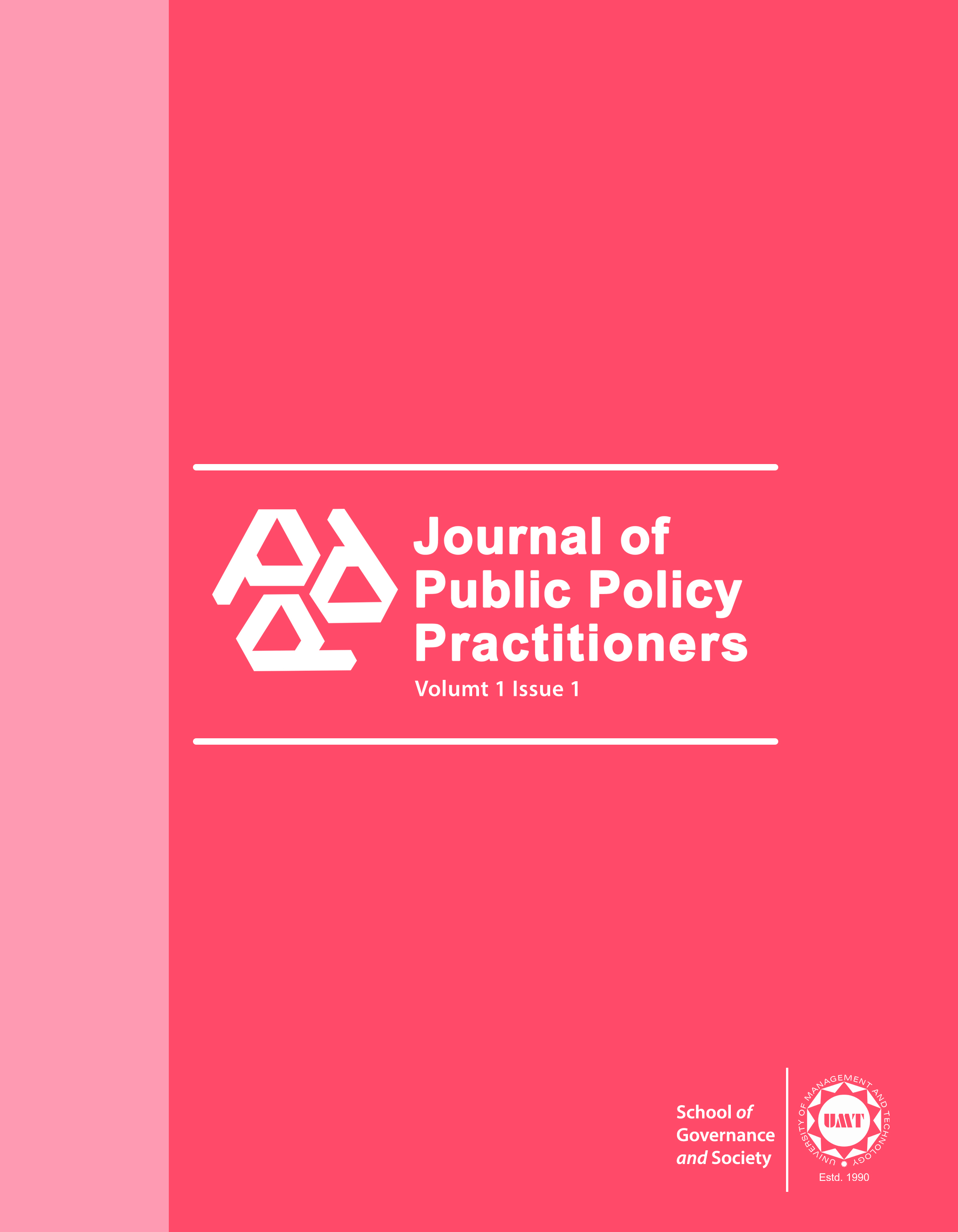Impact of Pak-IMF Bailout Arrangement on Economic Growth
Abstract
 Abstract Views: 102
Abstract Views: 102
Government of Pakistan has been facing various macro-economic challenges due to internal and external factors. Pak economy suffers from monetary, fiscal and BOP crisis after every few years building up a near crisis scenario which needs to be managed through traditional stabilization policies most common among them is approaching to IMF. Pakistan’s policy of dependence on internal and external loans is not new and the cost of these crisis management plans has a strong reason behind slowing down socio-economic development. The recent economic crisis has approached after facing a significantly harsh macroeconomic imbalance during 2000-2016 while Pakistan was under an IMF Program. To bridge up the gaps in import- export, making up declining foreign reserves, satisfying FATF and support the BOP imbalance, Government was left with no alternative except to have a bailout package with IMF embracing all the attached harsh conditions. During the recent past Pakistan failed to enhance its portfolio, put a gauge on unnecessary and luxury exports at higher rates, a weak tax system where tax evasions increases fiscal deficit, lavish exemption and reductions in tax rates rising inflations, expanding unemployment and a weaker industrial base make Pakistan stand on the verge of serious dip. All this has a trickle down impact to the poor masses due to weaker economic policies and deepening corruption in Pakistan. These are the ideal ecological factors which held the IMF plant grow greener and healthier. The present bailout program has a list of policies to correct domestic and external factors and strengthen the economy of Pakistan as it has been doing in many other countered. This paper is an attempt to cover the impacts of previous program and of the recent one on the economy of Pakistan.
Downloads
References
Ahmed, K. (2019, September 22). Over 30 percent of Pakistan’s workers laid off amid economic meltdown — industry insiders. Arab News. https://www.arabnews.com/node/1557676/pakistan
Azam, M., & Lukman, L. (2010). Determinants of foreign direct investment in India, Indonesia and Pakistan: A quantitative approach. Journal of Managerial Sciences, 4(1), 31–44.
Bhatti, M. N. (2019, May 13). IMF and monetary policy of Pakistan. The Nation. https://nation.com.pk/13-May-2019/imf-and-monetary-policy-of-pakistan
Dunya News. (2019, October). Pakistan’s tax to GDP ratio contracts to 11.6% in FY19. https://dunyanews.tv/en/Business/507691-Pakistan-tax-to-GDP-ratio-contracts-to-11pc-in-FY19
Federal Board of Revenue. (n.d.). Video tutorials - Income tax return filing. Retrieved November 16, 2019, from https://www.fbr.gov.pk/video-tutorials-income-tax-return-filing/51147/132186
Finance Division. (n.d.). Economic survey of Pakistan 2018-19. Retrieved November 2, 2019, from http://finance.gov.pk/survey/chapters_19/Economic_Survey_2018_19.pdf
Harding, R. (2019, April 12). Japan’s population decline despite record immigration. Financial Times. https://www.ft.com/content/29d594fa-5cf2-11e9-9dde-7aedca0a081a
Heakal, R. (2021, July 26). An introduction to the International Monetary Fund (IMF). Investopedia. https://www.investopedia.com/articles/03/030703.asp
IMF board approves 6 billion dollars package for Pakistan. (2019, July 4). Aljazeera. https://www.aljazeera.com/ajimpact/imf-board-approves-6bn-loan-package-pakistan-190704014555180.html
International Monetary Fund (IMF). (2016, April 6). Factsheet-Special drawing rights (SDR). https://www.imf.org/external/np/exr/facts/sdr.htm/pdf/sdr.pdf
Iqbal, S. (2019, July 7). Loss making enterprises borrow record Rs 330 Billion. Dawn. https://www.dawn.com/news/1492623
Kazmi, S. K. H. (2019, July 24). Manufacturing in decline. Pakistan Economist. https://www.pakistangulfeconomist.com/2019/06/24/manufacturing-in-decline/
Khan, R. E. A., Nawaz, M. A., & Hussain, A. (2011). Impact evaluation of structural adjustment program: A case of Pakistan. European Journal of Economics, Finance and Administrative Sciences, (29), 52–62.
Khan, A. H. (2019). Pakistan’s experience with IMF: S3H Working Paper Series. Strategic Thought, (1), 61–82.
Kundi, I. A. (2019a, July 18). Current account deficits narrow by over 31%. The Nation. https://nation.com.pk/18-Jul-2019/current-account-deficit-narrows-by-over-31pc
Kundi, I. A. (2019b, June 12). Rs7tr “tough” budget”. The Nation. https://nation.com.pk/12-Jun-2019/rs7tr-tough-budget
Lagarde, C. (2016, September 1). We need forceful policies to avoid the low-growth trap. IMF Blogs. https://www.imf.org/en/Blogs/Articles/2016/09/01/we-need-forceful-policies-to-avoid-the-low-growth-trap
Lipton, D. (2019a, July 3). IMF executive board approves us$6 billion 39-month eff arrangement for Pakistan. International Monetary Fund. https://www.imf.org/en/News/Articles/2019/07/03/pr19264-pakistan-imf-executive-board-approves-39-month-eff-arrangement
Lipton, D. (2019b, July 2). The statement of new boss of IMF. International Monitory Fund. https://www.imf.org/en/About/senior-officials/Bios/david-lipton
Macro Economy Meter. (n.d.). External debt (Percentage of GDP) – Argentina. Retrieved November 25, 2019, from http://mecometer.com/whats/argentina/external-debt-percentage-of-gdp/
Makuyana, G., & Odhiambo, NM. (2014). Public investment versus private investment: The case of Zambia. Journal of Governance and Regulation, 3(2), 23–31.
MG. (2018, November 20). Mounting savings rate a key to economic growth. Mattis Global News. https://mettisglobal.news/mounting-savings-rate-a-key-to-economic-growth-mg-opinion
Monnoo, K. (2019, March 27). Why our exports are not growing? The Nation. https://nation.com.pk/27-Mar-2019/why-our-exports-are-not-growing
Mustafa, K., & Haider, M. (2019, August 28). Budget deficit escalates to Highest ever in eight years. The News International. https://www.thenews.com.pk/print/518313-budget-deficit-escalates-to-highest-ever-in-eight-years
Pakistan foreign direct investment. (n.d.). Trading Economics. Retrieved October 5, 2019, from https://tradingeconomics.com/pakistan/foreign-direct-investment
Phillips, N. (2018, May 27). No love lost: A brief history of Argentina and the IMF. The Bubble. https://www.thebubble.com/history-argentina-imf
Rafique, A., & Tarar, U. (2019, August 28). Egypt nears end of IMF program. Has it been a success. Globely News. https://globelynews.com/middle-east/egypt-nears-end-of-imf-program-was-it-a-success/
Samaa. (2016, August 4). PM claims breaking begging bowl. https://www.samaa.tv/news/2016/08/pm-claims-breaking-beggars-bowl/
Syed, S. H., & Majeed, M. T. (2007). Public policy and private investment in Pakistan. Forman Journal of Economic Studies, 3, 100–110
Talal, S. (2018, November 23). Here’s the breakdown of Pakistan’s history with the IMF. Pro-Pakistani. https://propakistani.pk/2018/11/23/heres-the-breakdown-of-pakistans-history-with-the-imf/
Zaidi, H. (2018, October 22). Pakistan needs to go for high value-added export basket. Express Tribune. https://tribune.com.pk/story/1831008/2-pakistan-needs-go-high-value-added-export-basket/
Zeb, M. (2019, July 21). Oil import edge up in FY 19. Dawn. https://www.dawn.com/news/1495346
Copyright (c) 2022 Zahida Sarfraz

This work is licensed under a Creative Commons Attribution 4.0 International License.







